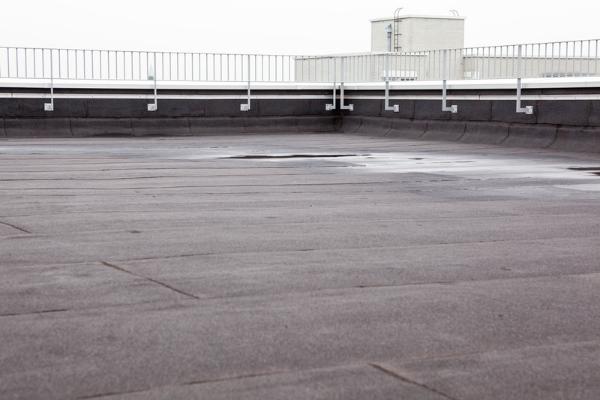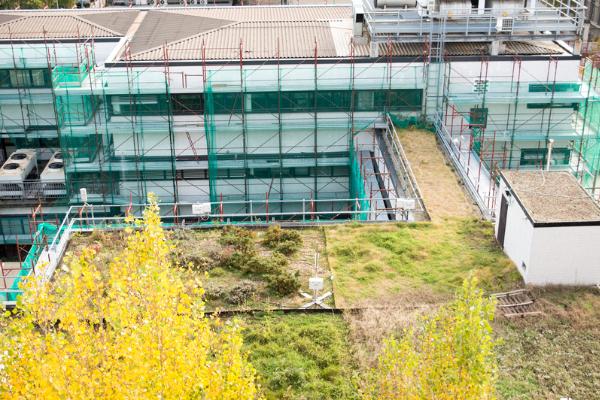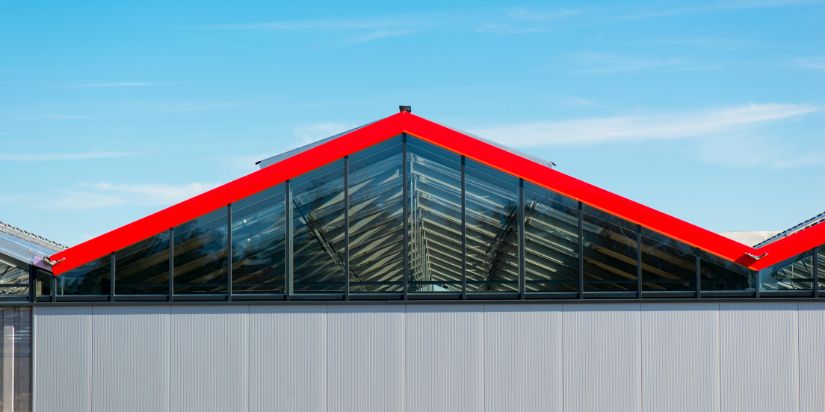Renowned Building Solutions has plenty of experience working on residential roofs across Chicagoland, but we’re no strangers to types of commercial roofing systems either. We’ve brought our roofing abilities to car dealerships, shopping malls and churches, so we know we can help you. If you need to repair or install a roof, the most important considerations are threefold: energy efficiency, cost and durability. How well will this roof insulate your business, how much will it cost in the long run, and how many years will it last? In this blog, we’ll talk about why there’s much more to a flat roof than meets the eye.
What Are the Different Types of Commercial Roofs?
Whether your roof has a low slope or steep slope, the type of roof you have will inform the best replacement or repair. New and old strategies abound. Unwieldy climates might require extra spending in the interest of insulation, but maybe the surrounding climate is mild enough for you to switch to a green roof. Whatever your circumstances, we’d be happy to help you install these different types of commercial roofs.
Built-Up Roofing Is Persistent
There’s a reason businesses have depended on Built-Up Roofing (BUR) for a century. Not only do up to five layers of asphalt and tar provide excellent insulation and durability, but BUR roofs are flexible enough to exhibit fewer layers in mild climates. As a testament to the method’s efficacy, most businesses in North America thrive beneath these roofs.
Single-Ply Roofing Is Really Strong
With only one layer, single-ply roofing can be equally effective. Single-ply roofing phones in the unique elasticity and impregnability of chemical compounds to make some of the strongest roofs. These roofs resist all types of weathering, from peeling to cracking.
Thermoplastic Polyolefin
Thermoplastic Polyolefin (TPO) roofing is common among low-slope roofs. Contractors reinforce roof sheets by welding them at the seams, and they reflect hot sunlight. This single-ply layer is made from a combination of two types of rubber. There are also different colors, including white, gray and tan. We achieve TPO roofing through direct mechanical attachment, adhesion or ballasting.
Polyvinyl Chloride
Polyvinyl Chloride (PVC) roofing is slightly more complex, though roofers still consider it to feature one “layer.” A PVC roof is a layer of polyester reinforcement sandwiched between two layers of PVC. The top layer offers great resistance against ultraviolet light, while the bottom layer offers enough flexibility to make the very installation process easier.
Ethylene Propylene Diene Monomer
Say that one time fast! Ethylene Propylene Diene Monomer (EPDM) roofing also boasts incredible resilience and flexibility. Especially resistant to the sun’s brutal rays, EPDM further owes its popularity to how inexpensive it is. This impressive layer is a meticulous concoction of oil and natural gas. It’s popular not only in the United States, but across the world at large.

Commercial roofing systems often combine asphalt with chemical compounds.
Modified Bitumen Roofing Beats the Weather
Modified Bitumen roofing combines the dependability of conventional asphalt with the innovation of chemical compounds. No less resistant to temperature than the above medley, modified bitumen roofs are elastic and easy to install year-round. During installation, contractors melt seams together to maximize defense against wind, hail and fire (you never know).
Unconventional, But Effective Roofs Work Just as Well
The most effective roofs are usually the ones that exhibit chemical compounds, asphalt or both. There are still circumstances under which other roofs might come in handy. If you live in a mild climate, or if you have a lot of money to blow, you definitely have further options.
Metal Roofs Make for Big Guns
As expensive as a metal roof can be for a residential customer, your business may benefit from its unmatched durability, protection and aesthetic. Versatile enough for low-slope and steep-slope roofs, metal roofing has a lifespan of up to 60 years. Metal roofs can also be made out of different metals. Types of commercial metal roof panels include simple aluminum as well as corrugated steel. Metal roofing also regards some of the different types of commercial roof decking.
Is the Climate Right for Green Roofs?
If your business is in a mild climate, you might benefit from investing in a green roof. Keep in mind that a warm climate prone to storms isn’t necessarily a mild climate. As its name suggests, a green roof is a layer of greenery above an impenetrable waterproof membrane. While this complexity may suggest fragility, green roofs can last for 50 years in the right climate.
In addition to improving local air quality, green roofs provide recreational areas for employees and patrons. With its absorbent plants and soil, a green roof alleviates the need for drainage. Meanwhile, it still offers plenty of insulation to keep energy costs low. These benefits may easily be worth the more vigilant maintenance you’ll have to perform. A temperate area with few storms should be the perfect place to build a green roof. In other words, a green roof may not be a good choice for Northern Illinois!

A green roof can be a great way to take advantage of a mild climate.
We Work on All Roofs from McHenry, IL
Insofar as we can install these different types of commercial roofing systems, we see ourselves as extensions of your team. We work quickly, effectively and discreetly enough for you to keep your business open during installation. In fact, the folks at Owens Corning have certified us to install their products, and we specialize in all forms of commercial roofing. We also have experience with applying coats that improve the longevity of current roofs. With our help, you can cash in on a durable roof that will insulate your business for decades.
We’re happy to share our commercial roofing expertise with Chicagoland as well as the rest of Northern Illinois and Southern Wisconsin. Our service area extends from towns like Aurora, Illinois to Brookfield, Wisconsin and beyond! To get started with your roof installation, contact us today for a free quote.


